|
The beginnings of our journey in the arts breathe through our audition stories. This memory of that special day at Fiorello H. LaGuardia High School of Music and Art and the Performing Arts proves that. (Usually I deal with only M&A subject matter but I'm sure you'll agree this particular story is exceptional).
Within a few weeks I walked into La Guardia High School of Music & Art along with a few thousand other students scheduled to audition, as well as my older brother Erick, since I was required to have a parent or chaperone with me and my mother was hospitalized.
times before, and the thought of getting up early every morning and traveling alone from the Bronx to do this for the next three years didn’t phase me, I wanted to be here, but the pressure building inside me through walking the hallways of that special place on that morning started to take hold of the feelings of a shy 14 year old.
After some time hearing the amazing voices of other students practicing around me while waiting to display what I considered a joy. I finally got called into a doorway that lead to a small music room with walls covered in acoustic panels, black boards sketched with music notations completing the full harmonic spectrum from the lowest levels of the F Clef all the way up through the highest tones of the G Clef, an upright piano, and two instructors sitting on chairs extremely close to where I was about to be asked to display my joy. I wished for tons of space around me to help remove the claustrophobic feeling of having to sing so close to these two strangers. Fortunately, one of these instructors was the friend my music teacher recommended to hear me perform, and as he explained who he was, the fear slowly dissipated.
They went on to ask me to sing my song. Because I was young and distracted with sports at the time, I never got around to practicing any specific songs throughout the few weeks leading to the audition, but on the spot I chose a beautiful ballad named “So Much In Love” from the album “Street Corner Symphony” recorded by The Persuasions and released in 1971. Street Corner Symphony was an album I played so often on my mother’s record player that I must’ve destroyed it with that needle constantly scraping through the valleys of the most amazing vocal wave forms ever pressed into wax. And fortunately for me, that beautiful song afforded me the space I longed for; transporting me to my joy of singing, yet still a bit nervous that I was singing in front of strangers.
After I finished singing I was given song sheets filled with written notation and asked to sing what I can read. This was that monkey wrench that hits us all when we feel like we’re rolling smooth, but fortunately, though I didn’t truly know how to read music, I was familiar enough with music notation through time in band class with Mr. Bieber that I was able to follow the notes up and down the scale without too much difficulty.
as the instructor had played them. The nervousness built back up as I’d never learned to play the piano, but I was fortunate to be able to remember every finger placement the instructor used when playing the phrases for me to hear. Then I was I was told we were done, and I was sent off with a kind, “Good Luck.”
First audition done. Now to navigate back through the sea of students to my second audition with the Instrumental Music Department. The instrumental music department was a few floors below the vocal music department, down in the basement level of the school. While I walked alone, within thousands of other students through the hallways and down the escalators, I couldn’t help hearing all the conversations about music lessons, performance achievements and plans for purchasing new instruments between these students and their parents who were allowed to be with them through this overwhelming process. And I couldn’t help thinking about the fact that I had no musical lessons outside of band class and time spent with my mom rehearsing songs with our church choir, I had never achieved anything musically apart from being given the opportunity to play the lead in the saxophone section of our small junior high band class and that I had to audition for both the vocal and instrumental music departments because I figured I could always learn to sing, but being accepted into the instrumental music department was the only way I’d ever be able to play an instrument since schools loaned instruments to students and my single mother had no way to afford purchasing any kind of instrument for me, especially something as costly as a saxophone. The day was certainly not done. And the pressure began to build again. Fortunately, there were other nervous students walking alone through these hallways without parents that weren’t afraid to admit their fear. It was as if we were divinely placed together that day in the hallways of this special place in order for us to hold each other up, and after meeting these new friends, I didn’t just want to be here, I needed to be here. Unfortunately, the hallways of the instrumental music department that morning were filled with the sound of extreme musical precision coming from every angle. Every door through this acoustically quiet environment had students waiting in line to show this new set of instructors a reason to be given one of the limited positions in their lineup for the next few years. And every door seemed to swing open just as fast as it closed, causing the acoustically quiet environment to have no effect on the fact that I’d placed myself in a much more vicious musical competition than I could have dreamed possible. I was completely out performed, even though I’d spent the last month practicing a special piece of music with my junior high music teacher, Mr. Bieber. Most everyone around me had just spent the last decade perfecting their skill and it was very apparent that I would never touch a musical instrument in this school. I only hoped that I wasn’t too nervous during my vocal music audition an hour earlier.
“So, what are you playing for us today?” The first words I heard from this new set of instructors almost caused me vertigo. I’d just spent over an hour hearing every kind of classical etude and sonata as well as all kinds jazz riffs and ballads blaring through these new hallways. Embarrassment is a description that wouldn’t dare to come close to my feelings at that moment. “The Love Theme from the Superman movie.” Since I started practicing this piece a month earlier I’d fallen in love with it’s melodic character and worked very diligently to breath it’s gentle notes with as much emotion as I could express, but my nerves were so shattered that I couldn’t even get out the first note. “It’s ok. Take a moment and when you’re ready you can start over.” The patience from my new panel of instructors was very calming, but my nerves could not be mended, and I performed the worst rendition of this piece of music that I ever had the whole month I spent learning it. I was done, but the audition was not, and I went on to performing all of the same kind of repetitive phrases asked of me during the vocal department audition, with the inclusion of percussive phrasing and the exception that I was to play on the saxophone various pieces of sheet music instead of singing them vocally. With my horrible performance of a comparatively simple piece of music than what most other students meticulously leveled out before me and the fact that I could barely play a complete sheet of notation placed before me, I was done.
After a few weeks the school year was coming to an end and my mother was transferred to the ICU at Lincoln Hospital up in the Bronx. The thought of the auditions had passed and my only concern was the time I had to visit my mother. Then I received the letter. The thought of becoming a musician had been a dream of mine since the age of 3. Listening to my mother sing around the house and at church made a huge impact on me. The reality of learning music could only come through public school since my mother just couldn’t afford lessons of any kind. Even years earlier before my parents divorced, when they asked me what I wanted for my fifth birthday and I told them I wanted to learn how to play piano, and after a couple days of running around with my father to find affordable lesson but having no luck, only to see him wiping tears from his eyes before he apologized and told me we couldn’t get piano lessons. The idea of learning music was certainly a dream.
I opened the letter and quietly read it. It mentioned that I had a choice to make. I was to chose whether I was to accept an invitation to enroll into the vocal music department or to accept an invitation to enroll into the instrumental music department. I was shocked and had to read the letter a couple times over. Then I went to Lincoln Hospital and read it to my mother. Of course, she was always the most encouraging and when I asked what she thought, she said to chose whichever was the one I loved most. I wanted to learn to sing, but I chose to enroll into the instrumental music department because I loved her the most. And I wasn’t about to make a choice that would cause her to have to struggle to give me any more than she already had given.
Four months later, I started my first year in high school as a sophomore learning Bassoon, quickly gaining the position of first seat in our class orchestra, learning to play some of the most beautiful music I’d ever heard. My brother Erick became my legal guardian, and my mother had spent her first two months in her eternal home with her Lord and Savior Jesus Christ. LaGuardia High School of Music & Art became and has been since, one of the biggest blessings I could ever receive. I loved my time there as a student, and I cherish the memories I’ll hold onto until I meet my mother again when I truly am done.
4 Comments
By Bernie Bierman - Class of Spring 1951
(As seen on Facebook, Graduates of the High School of Music and Art in New York City, August 31, 2015)
On June 9, 2001, some 60 members of the June 1951 graduating class went to St. Nicholas Heights to see the old Castle-on-the-Hill. The visit was part of a 3-day celebration of their class’ 50th graduation anniversary. The name in Gothic letters “High School of Music and Art” over the main entrance was of course absent. It had been removed about 17 years previously. But the Gothic-style building was very much there, as majestic as it was when those 60 members of the Class of June 1951 left it for the last time all those many years before.
When we entered the lobby, every single one of us felt as if we had entered a time machine. The dark wood-paneled lobby had barely changed. It was the same lobby that we saw every day for four years. If there was any change, it was the absence of the bust of Maestro Arturo Toscanini, who used to welcome both teachers, students and visitors. He too, like the Gothic letters over the main entrance, had been removed. And that very same time machine effect continued when we entered the auditorium. Here too, nothing had changed since June 26, 1951, or at least nothing that was immediately visible to the eye.
However, physical change was easily discernible elsewhere in the old castle. The music rooms, the art rooms were gone. The massive orchestra room had been partitioned into several chemistry rooms. Lockers lined the hallways. Classroom furniture had been modernized. Other physical signs of modernity were everywhere, including a sign in the state-of-the-art gym that directed students to the place where they could obtain condoms. But all of this was to be expected, for after all, 50 years had elapsed. The old castle-on-the-hill was no longer the High School of Music & Art. It was now the A. Phillip Randolph High School. I could not help but think of the words of Gertrude Stein, “You can’t go back there anymore because there isn’t there anymore”.
* * * * *
Structural changes are certainly not the sole markers of history. They are not even the principal markers. Rather, the principal markers of history are evolutionary changes. The evolutionary changes that were wrought over the years at the High School of Music & Art were to be sure not self-created or self-generated. On the contrary, those evolutionary changes came about because of external forces.
The High School of Music & Art of the first decade-and-a-fifth (1937-49) was not the High School of Music & Art of the second decade (1950-60), for the simple reason that the environment in which it existed - New York City - was not the same in the former-mentioned decade as it was in the latter-mentioned decade. And on an even grander scale, the America of the 1940’s was not the America of the 1950’s. The evolutionary changes that occurred in the 1960’s, the 1970’s and the 1980’s were even more pronounced and powerful.
In addressing some of the changes that occurred in the school over its nearly half-century history, it might be instructive to use the subjects of art and music as points of reference: I remember in the late Spring of 1991 walking the hallways of the then-new LaGuardia High School with my classmates, looking at the various works of art that lined the walls or otherwise placed within the hallways of the school. There were soft smiles on the faces of many of the art majors, indicative of their pleasure at seeing the boundaries of art having been so broadly extended. I distinctly recall the words of one of my art major classmates who when looking at a piece of very modern sculpture done by a LaGuardia student, remarked “When we were kids, that would have been rejected even by the Museum of Modern Art”. What was defined, generally speaking, as art in 1950 would cause an M&A art major of 1970 either to bellow in horror or to “LOL”. By way of one small example, in 1950 photography was not considered an art form. In fact, any suggestion that photography was an art form would have been met by skepticism at best and ridicule at worst. Photography was viewed as the product of a mechanical device. You clicked a shutter and you got a picture. The idea of teaching photography as an art form was unheard of. But aside from just photography, the boundaries of art were still relatively restricted.
On the music side, the reins were just as tight and the boundaries just as restrictive. The expression “classical music” was often replaced by the term “serious music”, which clearly implied that musical forms other than “classical” were not serious. Instruments such as the accordion and the saxophone carried the adjective “illegitimate”. In 1950, there were musical instruments that were considered “female” instruments or “male” instruments. Girls played the harp. Boys did not. Boys played the trumpet and trombone. Girls did not. A “serious” musician did not play “that other kind of so-called music”. Jascha Heifetz, the world famous violinist and arguably the best in his field, was writing popular songs using a pseudonym; if such heresy had been exposed, tarring and feathering would have surely followed. The great conductor, Leopold Stokowski appeared at the school one day in 1950. It was as if God had entered the building. Would have Stephane Grappelli received the same welcome? A gospel chorus at Music & Art in 1950? “Have you taken leave of your senses?” would have been the response to such a concept, such a suggestion. A jazz ensemble? Not likely. Why George Gershwin, Cole Porter and Irving Berlin were viewed as below “acceptable” standards of music. An M&A student of the 1970’s or 1980’s would find such attitudes, such beliefs unbelievable, and therein lies some of the evidence of the enormous internal changes that the school experienced from one decade to another.
By the late 1950’s some of those barriers described started to crack, and by the 1960’s many had already fallen. As the 1970’s dawned. those barriers were crumbled ruins, curious relics of a past. (In Part 3, I’ll examine the core of the school and the effect of the great demographic changes of the 1960’s, 1970’s and 1980’s.)
Note: Instead of Part 3 (which is unavailable), the next story from Bernie Bierman will be Excerpt from "Confessions of a Faker."
By Bernie Bierman - Class of Spring 1951 (As seen on Facebook, Graduates of the High School of Music and Art in New York City, August 27, 2015) As is well-known to all of you, the High School of Music & Art was established in 1937 through the initiative of Mayor Fiorello LaGuardia. At the time of its establishment, it was one of the so-called “special” high schools of New York City, the others being Bronx High School of Science, Brooklyn Technical High School and Stuyvesant High School. All four schools required the passing of an entrance examination plus a higher-than-average elementary school or junior high school academic record. Music & Art was different from its three sister “special” high schools because it provided specialized education in music and the fine arts. However, it was very much like its three sister “special” high schools because of its emphasis on academics and academic achievement. Music & Art was considered and was called an “academic high school”, to differentiate it from the institutions called “vocational high schools”. It is noteworthy that the diploma issued to M&A graduates read, “Academic Diploma with (Music)(Art) Major”. No other New York City high school of the time issued a diploma with such language.
During my four years at M&A (1947-51), there was always an air of condescension when speaking about PA. I recall the phrase, “English for Idiots” as an expression of mockery about PA’s academic standards. Dance, which was an important and integral part of PA’s curriculum and which did not exist at all at M&A during my tenure, was at least a decade away from achieving the recognition and prestige that the art form has today. In 1961, the two high schools were merged. While it was a legal and administrative merger, it was in reality a merger on paper only. The old jealousies and condescension did not evaporate overnight. According to various historical accounts, there was resistance to this merger from various quarters. In fact, some accounts suggest that the merger was driven more by budgetary exigencies than anything else. Which account is more accurate is something we may never learn. However, notwithstanding paper merger, talk of actual physical merge began in the mid-1960’s and intensified in the 1970’s, an intensification that included the appointment of a single Principal for both schools (now sometimes called “campuses”), culminating in 1985 with the physical merger of both schools at their new home near Lincoln Center in Manhattan, appropriately named for the man who inspired the founding of the High School of Music & Art, Fiorello LaGuardia. With the opening of the new LaGuardia High School for Music & Art and the Performing Arts, the old High School of Music & Art, which existed for some 49 years in an imposing Gothic-style building on St. Nicholas Heights, and through which some 115,000-125,000 students passed, was no more. To paraphrase Ben Hecht, “Look for it only in the history books, for it is a place that is now but a memory”. And the same can be said of the High School of Performing Arts. (To be continued if interest warrants.) |
Your TIMEOpinions and commentary from the alumni. ArchivesCategories |
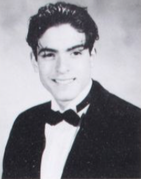
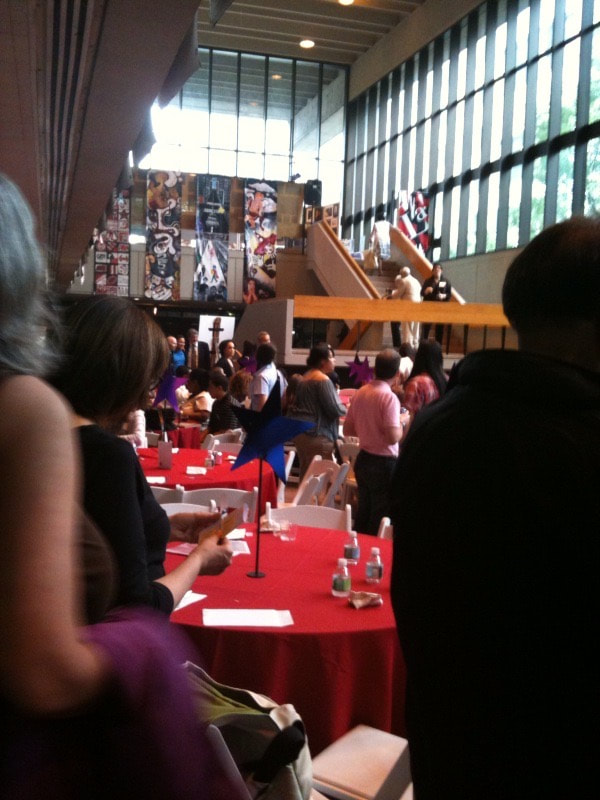

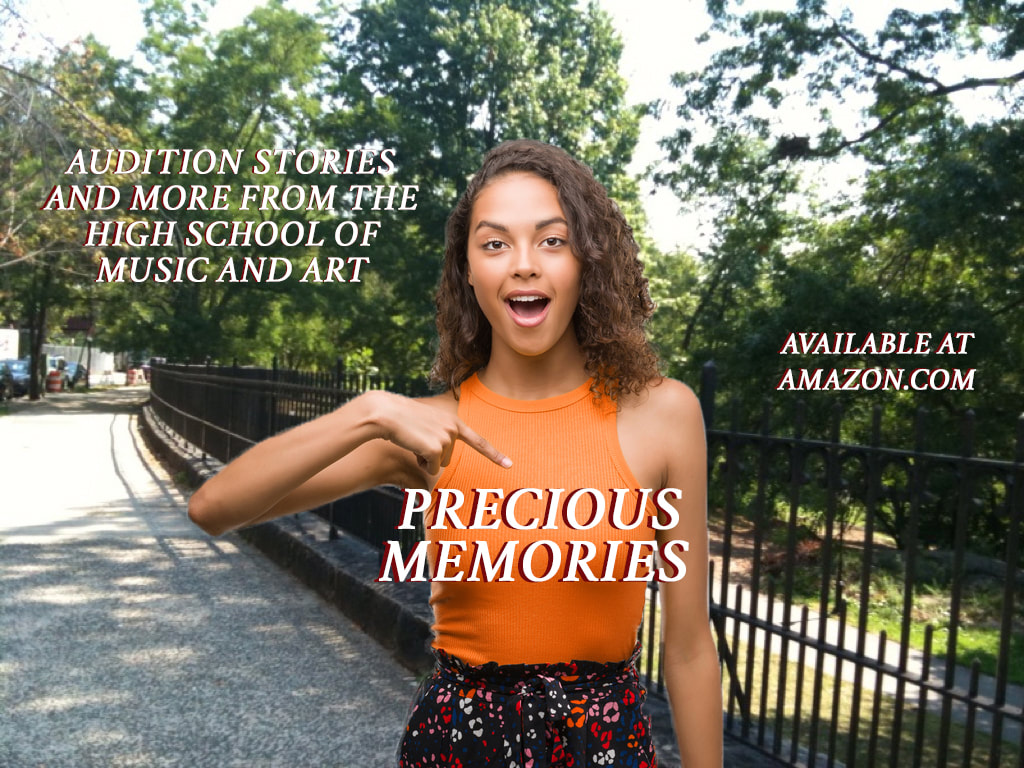
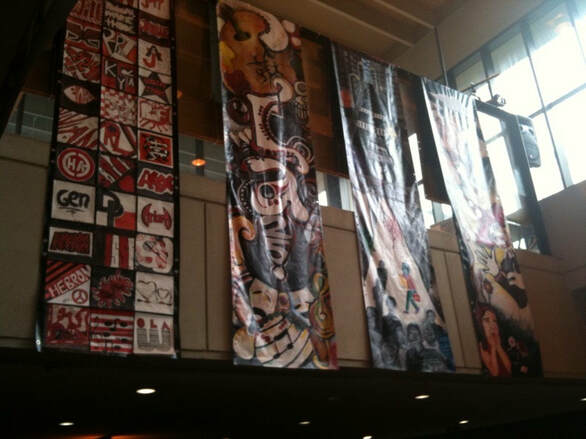

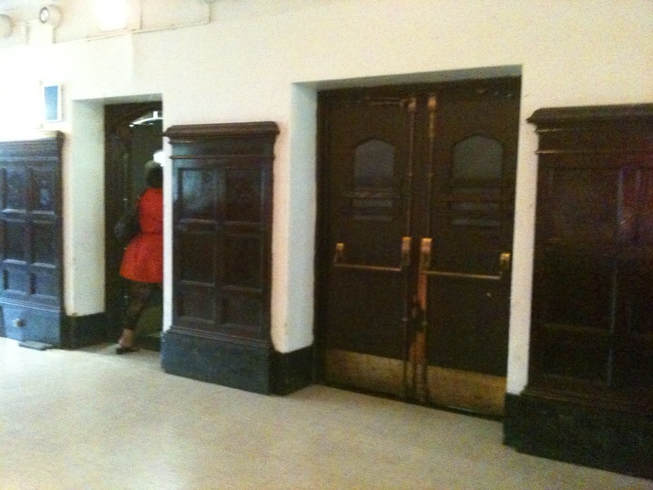
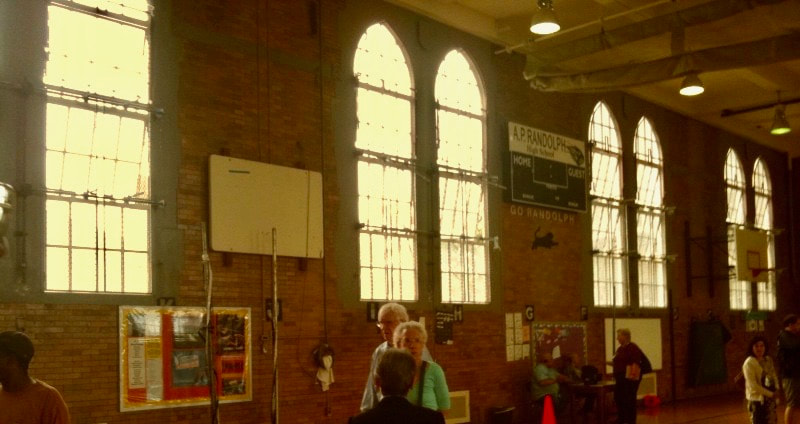


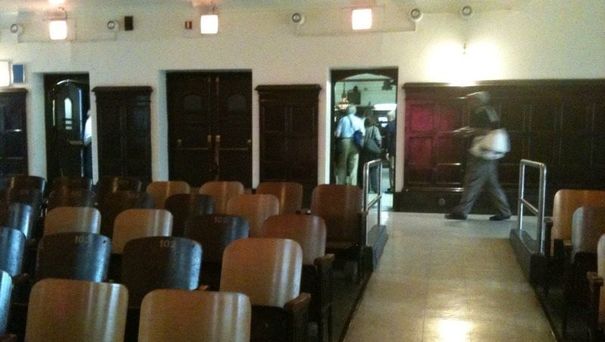

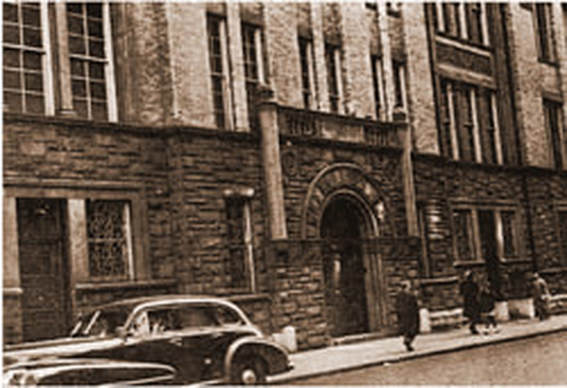

 RSS Feed
RSS Feed